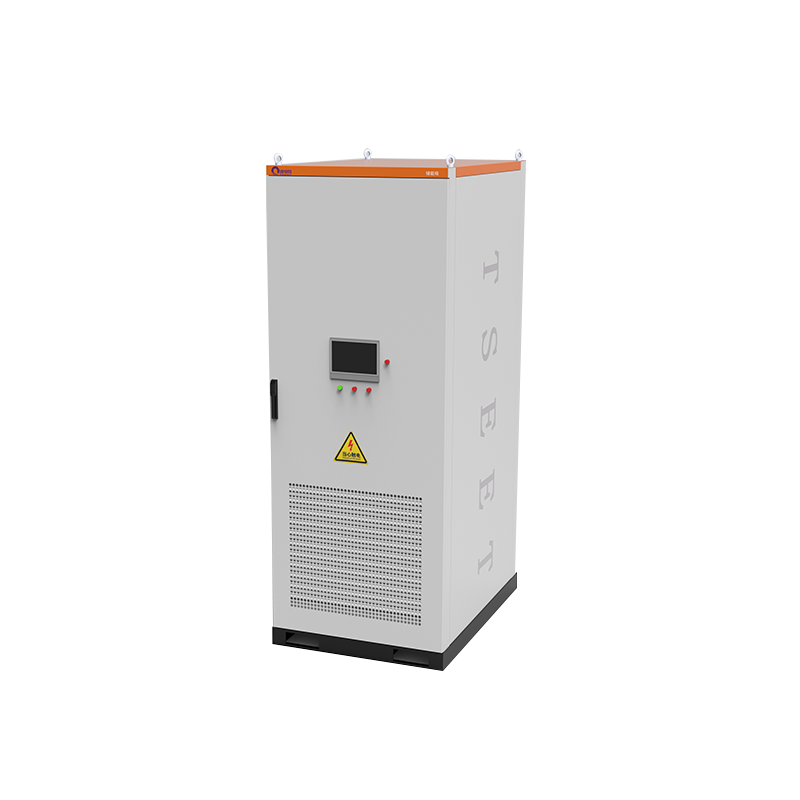Upper and lower energy storage cabinets
Product Features
- Product Description
- Performance characteristics
- Technical parameters
-
- Commodity name: Upper and lower energy storage cabinets
- 产品特点: High Energy Density: Uses lithium iron phosphate (LiFePO4) or ternary lithium batteries, offering high energy density and long cycle life. Intelligent Management: Equipped with BMS and EMS for real-time battery status monitoring and optimized charging and discharging strategies to ensure safe and efficient system operation. Modular Design: Supports flexible expansion and allows for configuration of battery modules with different capacities according to needs. High Safety: Features multiple safety protection mechanisms, including over-voltage, over-current, over-temperature, and short-circuit protection, as well as a fire suppression system. Strong Environmental Adaptability: Suitable for operating environments from -20℃ to 50℃, with a protection rating typically IP54 or higher. Grid-tied/Off-grid Compatible: Supports both grid-tied and off-grid operation to meet the needs of various application scenarios.
An energy storage cabinet is a standardized cabinet that integrates battery modules, battery management systems (BMS), energy management systems (EMS), thermal management systems, fire suppression systems, and other equipment for storing electrical energy and releasing it when needed. It can effectively balance electricity supply and demand, improve energy utilization efficiency, and support the absorption of renewable energy.
An energy storage cabinet is a standardized cabinet that integrates battery modules, a battery management system (BMS), an energy management system (EMS), a thermal management system, a fire suppression system, and other equipment, used to store electrical energy and release it when needed. It can effectively balance electricity supply and demand, improve energy utilization efficiency, and support the absorption of renewable energy.
Structural Composition
Battery Modules: The core component of the energy storage cabinet, composed of multiple battery cells connected in series or parallel, typically using lithium iron phosphate batteries.
Battery Management System (BMS): Real-time monitoring of battery voltage, current, temperature, and other parameters to ensure safe battery operation.
Energy Management System (EMS): Optimizes the charging and discharging strategies of the energy storage system to achieve energy scheduling and load management.
Thermal Management System: Controls battery temperature through air or liquid cooling to ensure the battery operates within the optimal temperature range.
Fire Suppression System: Equipped with gas or aerosol fire suppression devices to prevent battery thermal runaway from causing fires.
Power Distribution Unit: Includes circuit breakers, contactors, fuses, etc., for power distribution and protection.
Communication Interface: Supports communication protocols such as RS485, CAN, and Ethernet for remote monitoring and data transmission.
Product Showcase
Exterior Showcase
Energy storage cabinets are typically designed as standardized cabinets, with a clean appearance, often in gray or white, made of cold-rolled steel, and with a corrosion-resistant surface treatment.
The front of the cabinet is equipped with a touch screen or display to show system status, battery parameters, charging and discharging power, and other information.
Internal Structure Showcase
After opening the cabinet door, you can see the neatly arranged battery modules, with the BMS, EMS, power distribution unit, and other equipment reasonably arranged for easy maintenance.
The pipes and fans of the thermal management system (air or liquid cooling) are clearly visible, ensuring even battery temperature distribution.
Intelligent Monitoring System Showcase
Through the touch screen or remote monitoring platform, users can view battery status, charging and discharging curves, fault alarms, and other information in real time.
Supports remote monitoring via mobile APP or Web, enabling intelligent management.
Application Scenarios
Renewable Energy Generation Support: Supports photovoltaic and wind power generation systems, smoothing power output, and improving energy utilization.
Grid Peak Shaving and Frequency Regulation: Participates in grid peak shaving and frequency regulation, balancing power supply and demand, and improving grid stability.
Industrial and Commercial Energy Storage: Used in factories, shopping malls, office buildings, etc., to achieve peak shaving and valley filling, and reduce electricity costs.
Microgrid: As a core device of a microgrid, it supports off-grid operation and black start.
Emergency Power Supply: Provides backup power for important places such as data centers and hospitals. -
Used for storing electrical energy, it consists of a battery pack, PCS converter, BMS battery management system, EMS energy management system, cooling system, control system, etc., to achieve AC/DC conversion, detect the battery pack operating status, energy operating status, etc.
The components work together to enable the energy storage cabinet to suppress fluctuations caused by the connection of non-connected new energy sources to the power grid, maintain grid stability, and also suppress load changes, playing a role in frequency regulation and voltage regulation, and improving the power factor. -
Battery Side Parameters
Battery Cell Type
HC-3.2V/280Ah
System Configuration
1P52S (One Pack)
Battery Capacity
233kwh
Battery Voltage Range
670-1000V
Battery Cluster Specifications
Lithium-ion Battery
Number of Cycles
≥5000
Full Load Operating Time
2h
PSC Side Parameters
Rated Power
100kW
Total Harmonic Distortion of Current
≤3% (Full Load)
DC Component of Current
≤0.5%
Rated Voltage
400V
Grid Voltage Range
400V(-20%~+15%)
Rated Frequency
50Hz
Grid Frequency Range
50Hz/60Hz±2.5Hz
Allowable Grid Voltage Range
320-460V
Rated Frequency
50HZ
Connection Method
3W+N+PE
System Parameters
Product Dimensions (Length*Depth*Height)
1000mm*1400mm*2600mm
Product Weight
2704kg
Maximum Efficiency
90%
Enclosure Protection Level
IP54
Corrosion Protection Level
C3/C5
Allowable Ambient Temperature Charging/Discharging
0 ~ +55℃, -20 ~ +55℃
Allowable Relative Humidity
≤75%RH
Allowable Maximum Altitude
1000m
Standby Power Consumption
<50W
Thermal Management
Intelligent Liquid Cooling
Auxiliary Power Supply
Self-powered/Externally Powered
Fire Suppression System
Smoke Detector, Gas Fire Suppression (Perfluorohexanone), Immersion Water Fire Suppression
Communication Interface
RS485
Communication Protocol
Modbus TCP
Compliant Standards
GB/T3 9276,GB/T 34131,GB/T 34120,GB/T 34133
Related Products





